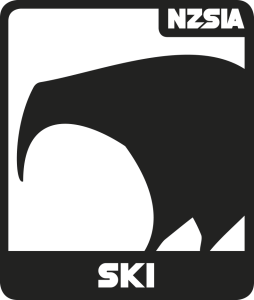Intro to Boxes & Rails
 What, Why, How
What, Why, How
What
To introduce the skills needed to safely slide a box and set up the fundamental skills needed to progress to other features in the park.
Why
The fundamental skills of sliding a feature are the same on most features so if this is set up correctly then students will have better success down the line.
How
Through skier analysis, determine that students are ready to slide on a box. Students should be able to ski balanced in a centred position, match skis parallel and do basic jumps while sliding. After this get your students to try skiing over a box 50/50 (straight) with skis parallel. Once students are comfortable in this it is time to introduce sliding sideways. First we need to decide which way to slide. This can be determined through other board sports (skateboarding, snowboarding, wakeboarding etc). Alternatively, with their skis off and eyes closed, give your student a gentle push from behind and see which foot they step forwards to balance on; this tends to be the dominant leg and will be the front foot. It is, however, great practice to learn this skill in both directions from the start to create versatility. From here practise popping and spinning 90 degrees to land sideways on flat skis (or feet) with even pressure. Move on to trying this while sliding down the hill and landing across the hill aiming to keep skis flat and continuing in a side slip. Once comfortable with this movement try it on to a large flat box, with the main focus popping and landing on the box correctly (sideways and even weight on each ski). To come off of the box forwards, as your student approaches the end of the box have them turn shoulders and head downhill, allowing the feet to follow.

 Technical Know-how
Technical Know-how
Skills
Students must develop a strong awareness of how to takeoff and land in a strong centred position with even weight on both skis and minimal edge angle. This can be developed through drills in and out of the park on jumps and flatland terrain. Fine-tuning the rate of movement will aid in learning new features.
Ski Snow Interaction
It is important to keep even lateral balance from foot to foot. This will allow for pop to be generated equally and the rotation to be around the axial plane. Skiers should aim to takeoff and land on a flat base whenever possible. Remaining centred along the skis will stop them from sliding forwards or backwards off of the side of the box.
ATTL
Approach does not need to be fast. A brisk walk or slow jog is plenty as we learn to slide boxes and rails. Setting a drop point and having students ski straight is a great way to reduce the chance of error here. Takeoff must be balanced evenly on both feet with focus on accurate timing of rotation. This will ensure the direction of travel is towards the end of the feature. Our trick is to land at 90º and slide the length of the feature. This should be done with a wider than usual stance and even weight, with the centre of gravity between the base of support. Our landing goal is to absorb the impact, forward or switch, balanced in the centre of the ski and ready to follow the flow line to the next feature.
 Teaching Tactics
Teaching Tactics
Terrain
When introducing the movements, flat ground away from the flow of traffic is ideal. When trying the pop and land sideways, terrain should be an easy green run with the least amount of traffic possible. When ready to take to a box use the lowest and widest box available that is flat. As with almost all park skills, an outside/in approach should be taken to skill acquisition. Train what is needed outside the park to give you success in the park.
Class Handling
Be sure to give students plenty of space and time when attempting new tricks in the park. The goal is not to crash but it may happen and boxes are firm so either lapping or hiking a feature give plenty of time between attempts.

